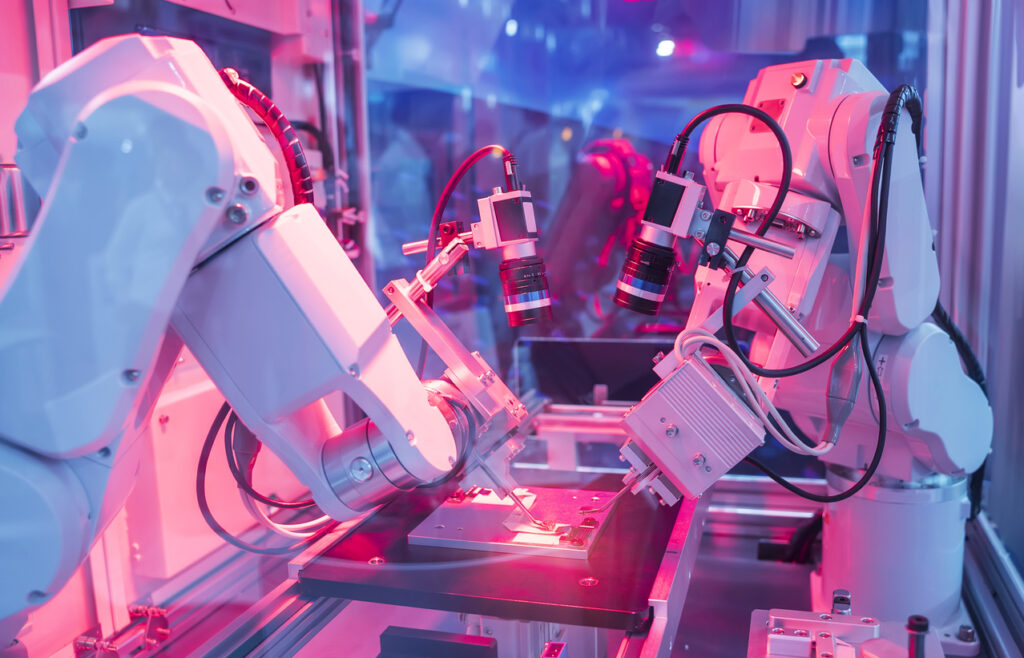Communication is vital for efficient operation of robotic systems. In an industrial setting. Two key concepts are available: Offline Programming (OLP) and drivers. Each method plays a different role in bridging the gap between human commands and robotic actions.
Offline Programming (OLP) is the process of designing, simulating, and optimizing robot tasks in a virtual environment before they are executed in the real world. This method is instrumental in pre-planning complex robotic operations, ensuring efficiency, and mitigating risks.
On the other hand, drivers in robotics are akin to their counterparts in computer systems – they are essential software components that enable communication between the robot’s control system and various external devices or software platforms. By translating high-level instructions into a language that robotic hardware can comprehend, drivers facilitate real-time interactions and adaptability.
Complex tasks
OLP primarily engages in high-level, abstracted communication through specialized software suites that allow engineers and programmers to design and simulate robotic tasks, creating a digital twin of the real-world environment. This approach enables the pre-visualization and modification of robot paths and behaviors, ensuring that complex tasks are optimized before physical deployment.
In contrast, drivers operate at a more fundamental level, acting as the real time link between the robot’s control system and the external world. They handle communication between the robot controller and other components of the industrial automation project. If combined with a remote interface such as TwinBox, robot drivers can facilitate the interaction between a robot arm and systems not normally capable of influencing a robotics project.

Environment
Offline Programming (OLP) and drivers each present their unique challenges. The setup of OLP systems involves the creation of accurate virtual models and the use of simulation tools. These models must precisely mirror the physical world to ensure that the programmed tasks are feasible when transferred to real robots. The complexity here lies not just in the technical expertise required, but also in the need for a thorough understanding of the robot’s physical and operational environment.
The complexity of developing and integrating drivers is rooted in the need for deep technical knowledge of both the robotic hardware and the software interfaces. Crafting drivers that can effectively communicate with and control a robot requires a nuanced understanding of the robot’s control architecture, sensor inputs, and actuator mechanisms.
Precision
OLP is particularly advantageous in scenarios where precision, repeatability, and safety are of the utmost importance. For instance, in manufacturing, especially in automotive and aerospace sectors, OLP is used to program complex assembly lines. Drivers shine in situations that demand real-time control and adaptability. In fields like collaborative robotics, where robots work alongside humans, the need for immediate responsiveness to environmental changes and human inputs is crucial.
Thus, while OLP is used for its ability to pre-plan and optimize robotic tasks in controlled environments, drivers are essential for enabling real-time interactions and responsiveness in more dynamic and unpredictable settings. The selection between OLP and drivers, or a combination of both, depends heavily on the specific requirements and constraints of the application at hand.

Robot Drivers with RoboDK
Any robot simulation that is programmed in RoboDK can be executed on the robot using a robot driver. The robot movement in the simulator is then synchronized with the real robot and it is possible to debug robot programs in real time.
Annin Robotics, ABB, Automata, Comau, Denso, Dobot, Doosan, Epson, Fanuc, Han’s.. are some of the supported robot drivers in RoboDK. Check the full list of robot drivers here.
The following article shows an example of an Online Programming project using robot drivers: Online Programming in Real Time
What questions do you have about robot drivers and OLP? Join the discussion on LinkedIn, Twitter, Facebook, Instagram, or in the RoboDK Forum. Also, check out our extensive video collection, documentation [https://robodk.com/doc/en/Robot-Programs.html#PostVsDriver], and subscribe to the RoboDK YouTube Channel.

